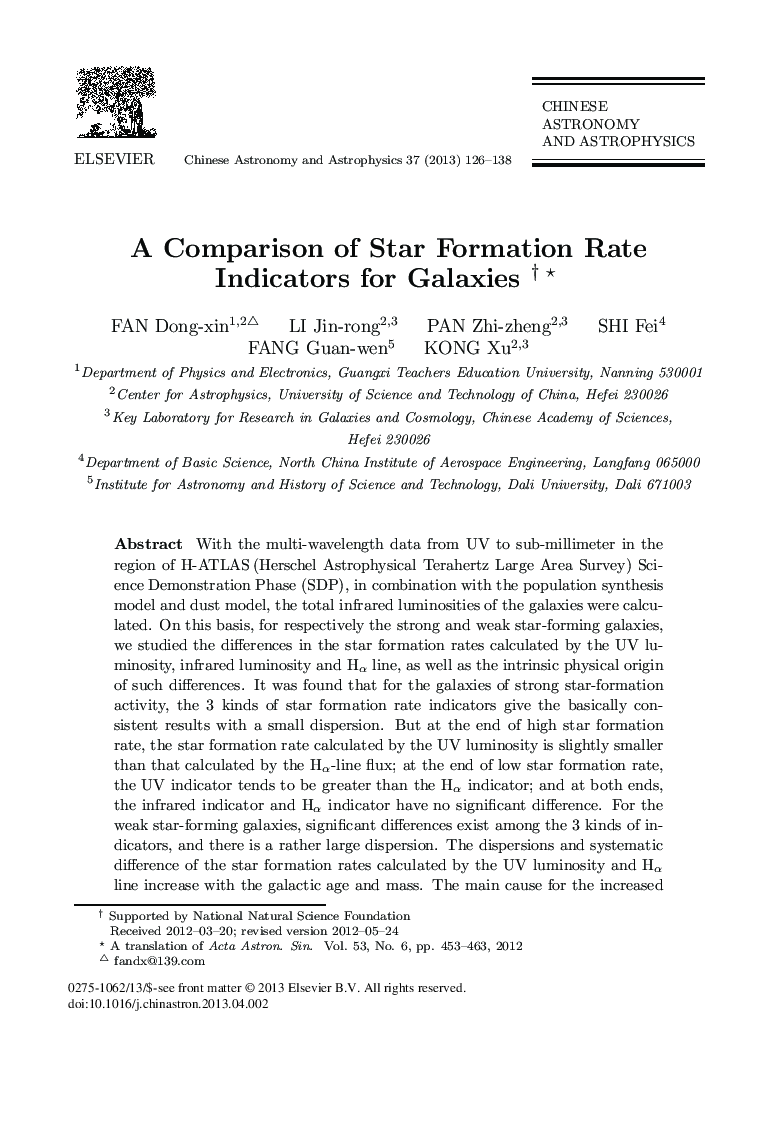| Article ID | Journal | Published Year | Pages | File Type |
|---|---|---|---|---|
| 1771858 | Chinese Astronomy and Astrophysics | 2013 | 13 Pages |
With the multi-wavelength data from UV to sub-millimeter in the region of H-ATLAS (Herschel Astrophysical Terahertz Large Area Survey) Science Demonstration Phase (SDP), in combination with the population synthesis model and dust model, the total infrared luminosities of the galaxies were calculated. On this basis, for respectively the strong and weak star-forming galaxies, we studied the differences in the star formation rates calculated by the UV luminosity, infrared luminosity and Hα line, as well as the intrinsic physical origin of such differences. It was found that for the galaxies of strong star-formation activity, the 3 kinds of star formation rate indicators give the basically consistent results with a small dispersion. But at the end of high star formation rate, the star formation rate calculated by the UV luminosity is slightly smaller than that calculated by the Hα-line flux; at the end of low star formation rate, the UV indicator tends to be greater than the Hα indicator; and at both ends, the infrared indicator and Hα indicator have no significant difference. For the weak star-forming galaxies, significant differences exist among the 3 kinds of indicators, and there is a rather large dispersion. The dispersions and systematic difference of the star formation rates calculated by the UV luminosity and Hα line increase with the galactic age and mass. The main cause for the increased systematic difference is that when the extinction of an weak star-forming galaxy is calibrated by its UV continuum spectral slope β, the UV extinction of the galaxy is overestimated, it makes the UV luminosity tends to be large after the extinction correction. In addition, the star formation rates (Hα) of weak starforming galaxies in the MPA/JHU (Max Planck Institute for Astrophysics/Johns Hopkins University) database are generally less than the real values.
